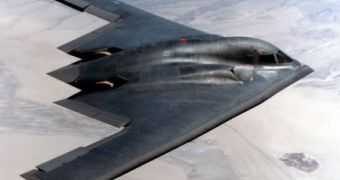What would a wheelchair-bound German amateur inventor be doing in the United Arab Emirates desert? Grow specially bred worms and create radar-evading paints for the military of course. Wener Nickel, age 67, went to the United Arab Emirates to conduct a project involving worms that produced excrements in which radishes could be grown. The sheikhs were rather impressed with the efforts of the German that came to their country to conduct a land reclamation project, although the investors were anything but that.
At a number of 3,000 worms per square meter of land, the project rapidly came to a halt due to spiraling costs. Nevertheless, Nickel stayed in the United Arab Emirates, as for his worms, all that remained of them is now displayed at the vivarium in Nickel's institute on Sheikh Mohammed Bin Road in Ras Al-Khaimah. "People tap on the glass and are upset if the worms don't crawl out of the soil immediately. They just don't have any patience", said Nickel.
Indeed, and mister Nickel seems too have a lot of patience. Too much, some would say. He decided to resume one of his older projects, started in the 1980s, involving an anti-radar paint, the so-called AR 1 paint. AR 1 can be applied in all militarily relevant frequencies and it works on the basis of a Jaumann absorber meaning that the incoming radar waves are reflected in such a way that interference cancels them out, according to Helmut Essen, radiation physicist from the radar technology department at the Research Establishment for Applied Science, who had analyzed samples of the paint sent by Nickel.
It is probably the best radar-evading paints ever developed, although Essen hasn't been quite successful in understanding how it actually works. "It's almost unbelievable. How on earth does the man do it?", says Essen while revealing that he had been receiving samples from Nickel over the years and each one was a little better than the previous.
The German authorities knew well about Nickel's progress ever since 2004, but they failed to take the opportunity to strike a deal with the inventor. Meanwhile, the Iraqi dictatorial regime then under the command of Saddam Hussein had contacted Nickel two years before. They looked pretty serious regarding Nickel's work, especially the 18 million US dollars check promised to him. "But the whole thing got too hot for me when they booked us rooms in the Al-Rashid Hotel in Baghdad", Nickel said.
Last year the Chinese started paying Nickel visits, them too being very interested in his wondrous paint. The German armed forces on the other hand remained unmoved until the middle on 2007 when, after ensuring that Nickel wasn't crazy, finally started showing some interest. Since then he is in direct contact with RheinMetall, a German defense contractor who hopes to use the paint for military applications.
Radar camouflaging "was a huge issue during the Cold War. But, nowadays, it's more of something that's nice to have", said Essen. Somehow the German armed forces, the Bundeswehr, are more interested in making vehicles highly visible rather than radar camouflaged.
AR 1 would probably have a better use in civilian applications, such as reducing the interference produced by airport buildings. "I've been trying to tell him for a long time, that he's more likely to get rich in civilian aviation than with the military", says Essen. Unfortunately, the paint only works at a certain distance, thus any drivers wanting to evade police radar would basically fall into their own trap. "When an object is moving at such close range, even the best shield paint doesn't do any good", he said.

 14 DAY TRIAL //
14 DAY TRIAL //